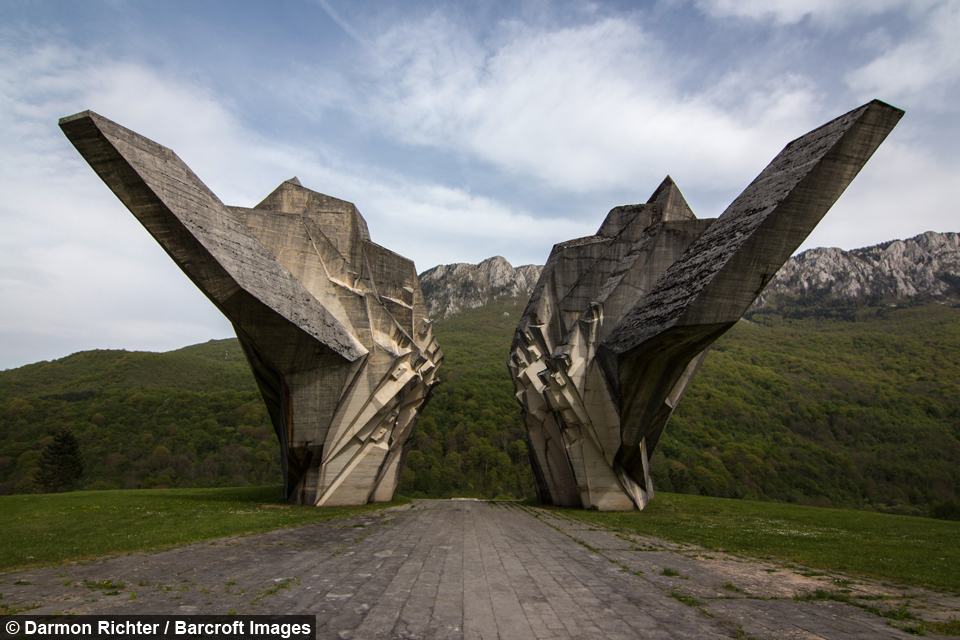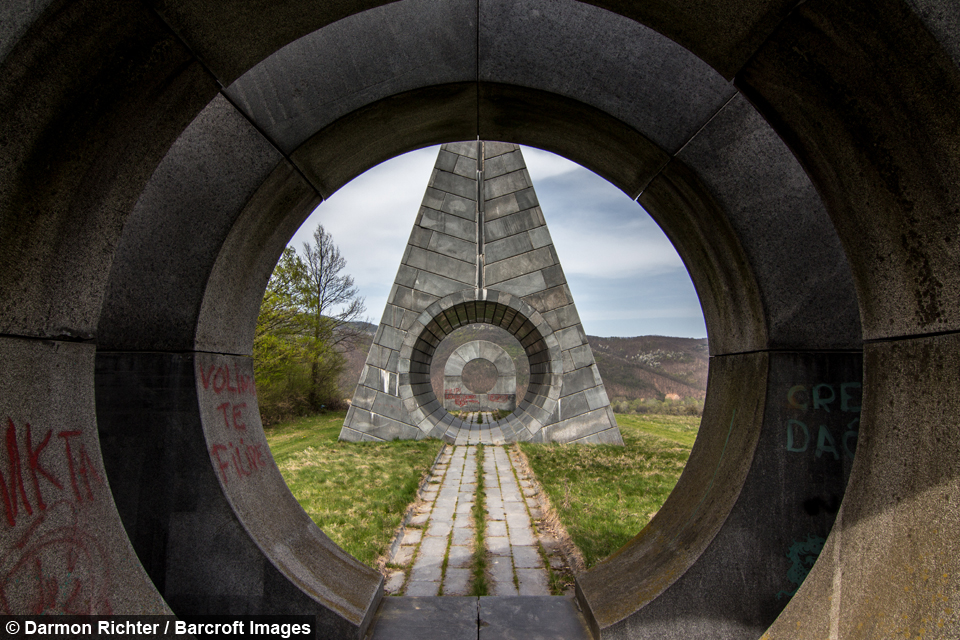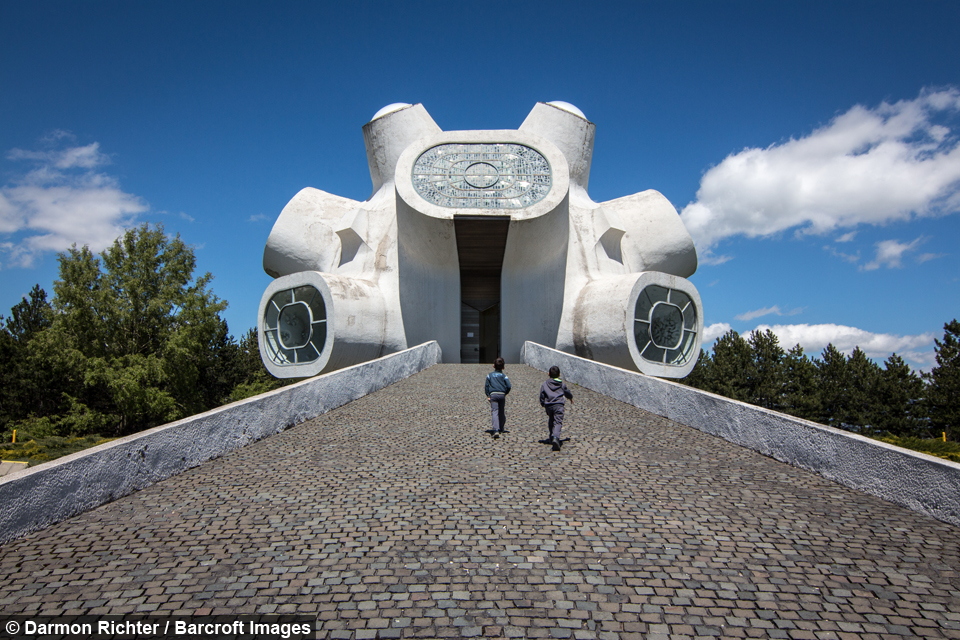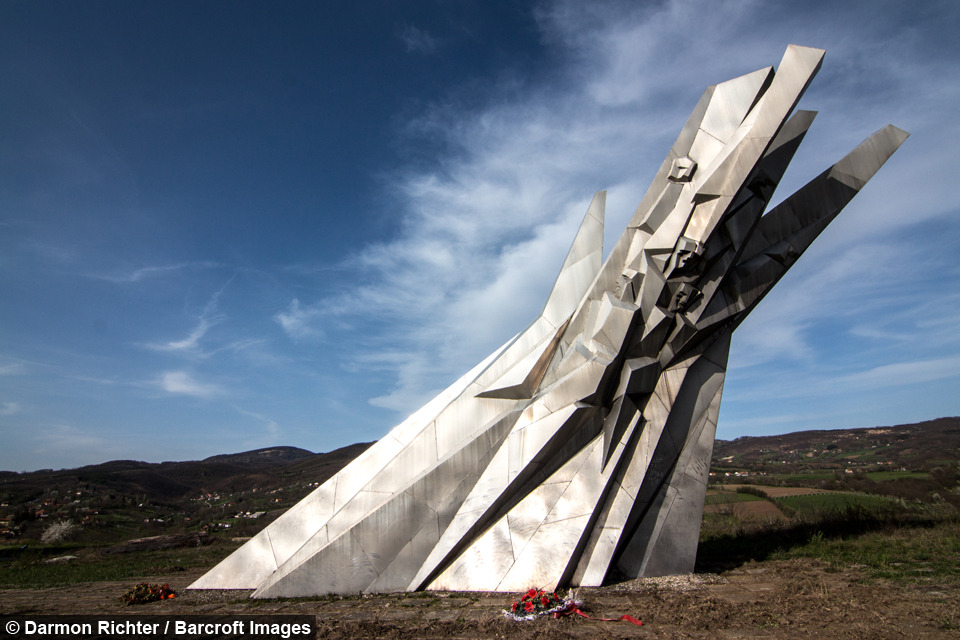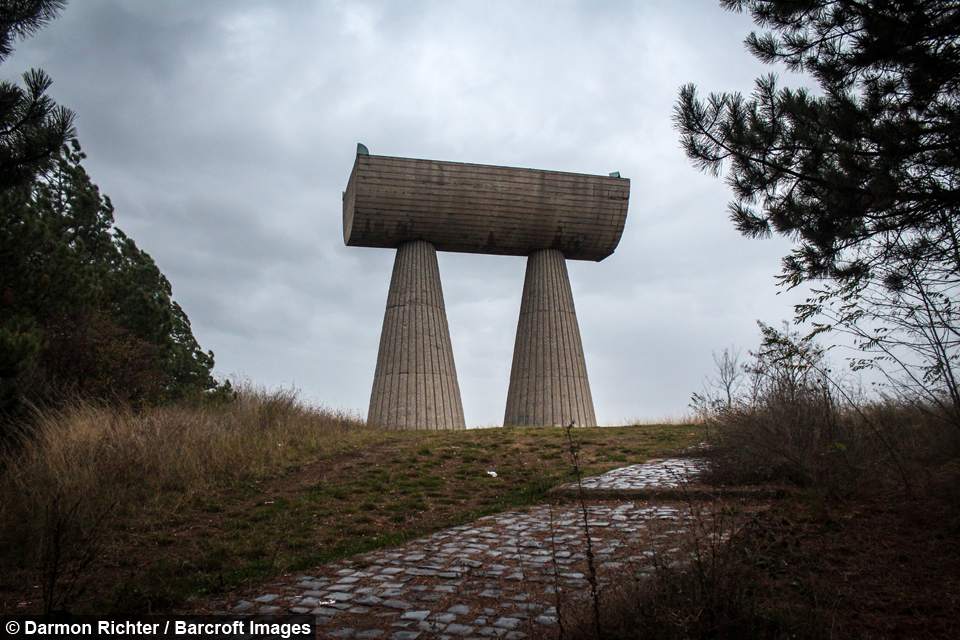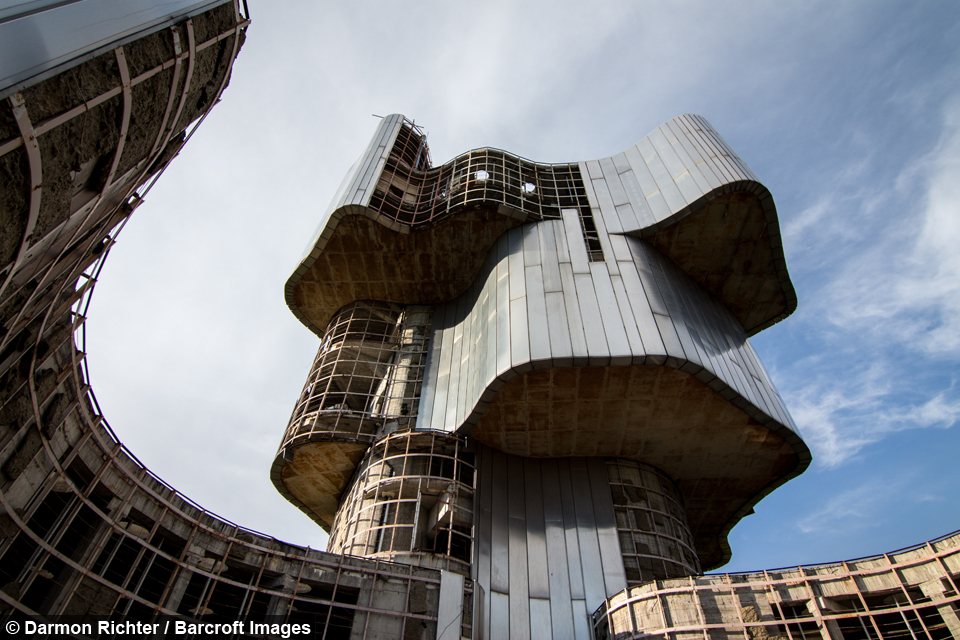The Mysterious Memorials of The Former Yugoslavia
By Shannon Lane @shannonroselane
Scroll down for the full story
Built in regions of the now-defunct state from the 1960s onwards, the ’spomeniks’ commemorate sites of WWII battles and concentration camps.
While some reports have painted these otherworldly memorials as abandoned and forgotten, British travel writer Darmon Richter travelled to 37 of the monuments in April 2016 to discover the truth about their origin and how they are now regarded.
He said: “They typically appear in significant locations - on former battlefields or in forest clearings once reserved for mass executions.
"During the Yugslav period these were busy places, full of buses, tourists and school children.
“Nowadays though, without such state endorsement, many of these sites have become difficult to reach – and finding them can be even harder.”
Popular rumours suggests that the structures were commissioned by former Yugoslavian President Josip Broz Tito, however Slovenian researcher Gal Kirn suggests that these structures were more commonly commissioned by independent groups – cultural institutions or workers’ collectives.
Once a design was approved, the federal government sometimes showed its support by offering funding for the project, while at other times the funds would come from within the individual republics themselves.
And unlike most memorials in western Europe, it is encouraged for the public to interact with these structures.
Darmon said: “While in western Europe it is more traditional to preserve places of death and suffering in a vacuum of solemn contemplation, here in the states of former Yugoslavia, where regular citizens have witnessed more death and lived through worse recent conflict than most westerners will ever know, death is not awarded quite so much power over the present.
“Instead, these memorial sites were designed to answer death with life. It’s a function that most of them continue to deliver, whether their governments maintain them or not.
“Rather than stiff, solem effigies to be observed from a distance, many feature staircases to viewing platforms or interior spaces for learning and reflection.
“They invite visitors to pass through them, changing shape when viewed from different angles so that the complete experience could only be had by exploring every corner, path and stair.”
Each spomenik is strikingly unique, from the futuristic design of the ‘Memorial to the Victims of Fascism’ in Bosnia and Herzegovina, to the morbid ‘Gates of Death’ in Serbia, which acquired its name from the large mounds formed of mass graves.
Another form of these monuments are the ‘spomen-doms’ or ‘memorial houses’, which accompany the larger structures or occasionally stand alone.
They contain artwork, museum exhibitions and even occasionally the bones of local partisans.
The photographer said: “That park in Niš, Serbia, with the three concrete fists, was once the site of massacre beneath these trees more than 10,00 people has been rounded up for execution during WWII.
"During my visit, Jamaican reggae pumped from the windows of a parked car, while peaceful pedestrians pushed prams, walked dogs and kicked balls around the open space.
"At the Slobodište Memorial Park in Kruševac, Serbie, almost 1,650 people were shot, it was a killing field, whose geography is still contoured by the humps of mass graves and burial mounds.
"Today however, children race up and down the slopes of barrows; there is an amphitheater filled with the sound of laughter.
"In reality the Balkan region is one of the most colourful places I’ve ever been, and the spomeniks themselves are vibrant things, full of energy and often surrounded by people.
"For people a world away to look at a photo and lazily imply that the locals have ‘forgotten’ this place, is naïve, distasteful and so very far from the truth.”

